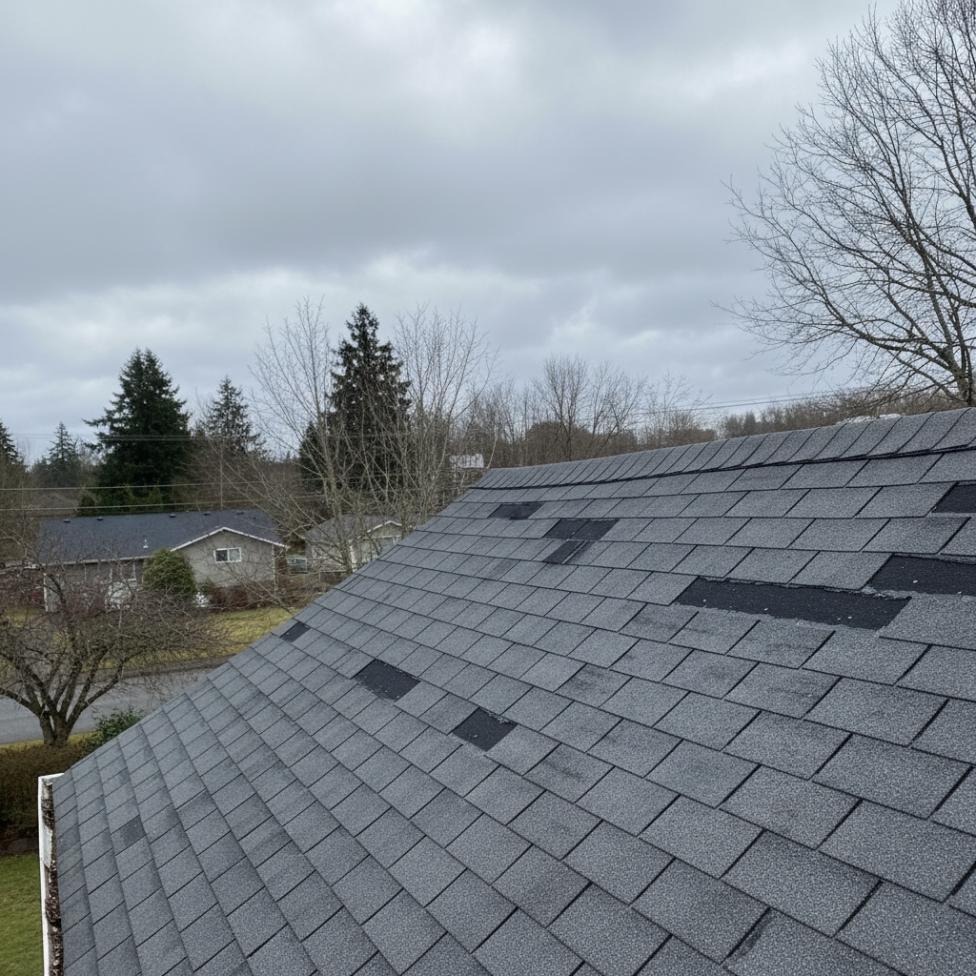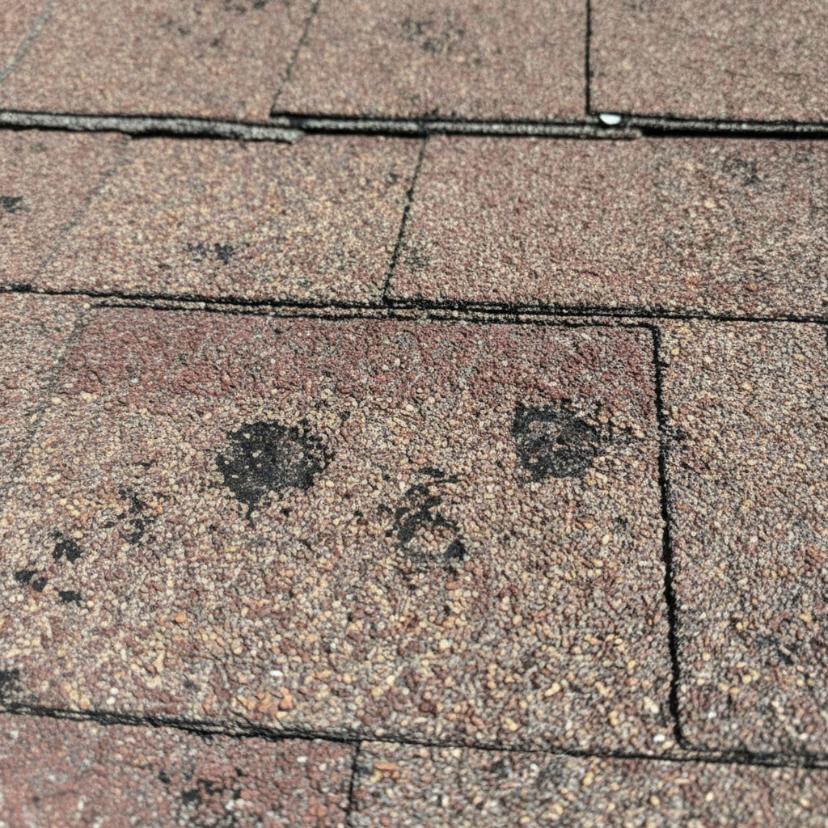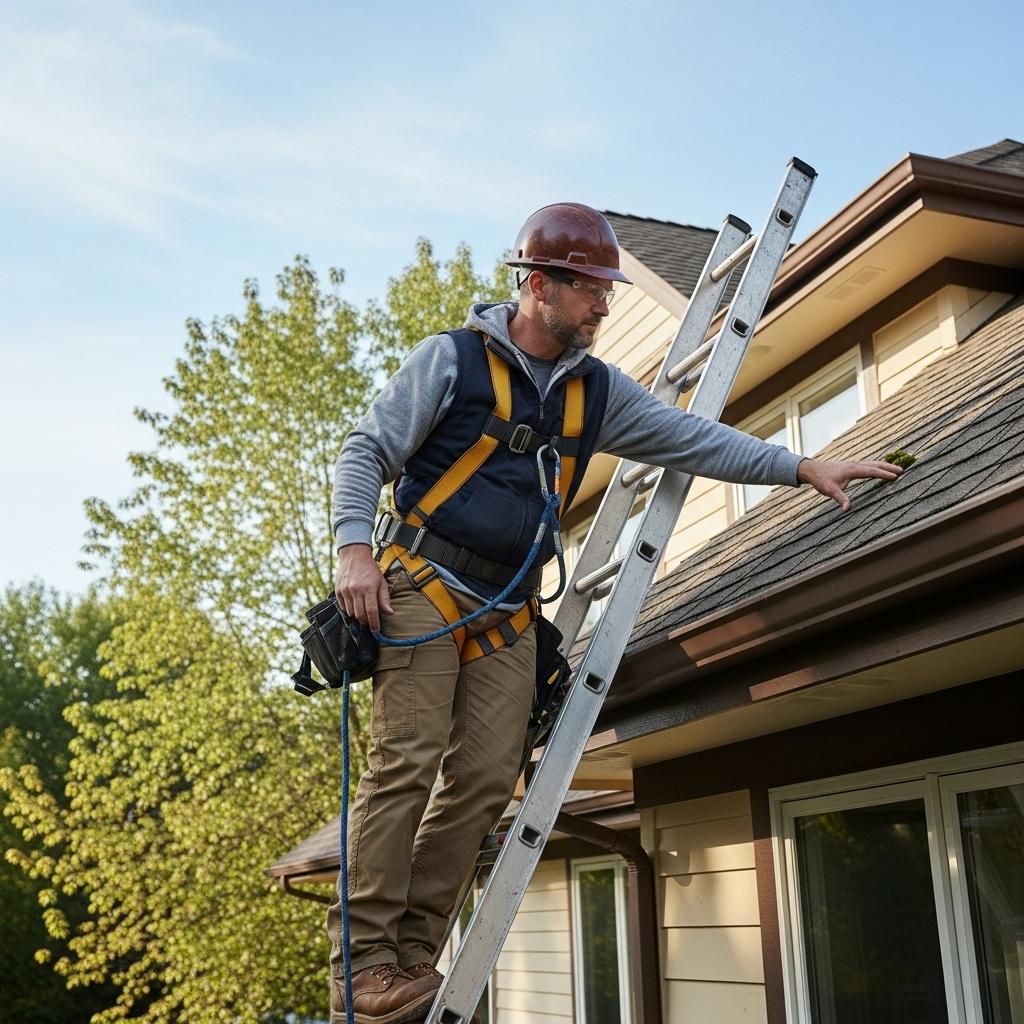Will Insurance Cover My Roof Replacement? - Complete Guide for Homeowners
 If you're wondering "will insurance cover my roof replacement," the answer depends on several key factors: the cause of damage, your roof's age, and your specific policy terms. Most homeowners insurance policies cover roof replacement when damage results from sudden, unexpected events like storms or falling trees - but not from normal wear and tear or lack of maintenance.
If you're wondering "will insurance cover my roof replacement," the answer depends on several key factors: the cause of damage, your roof's age, and your specific policy terms. Most homeowners insurance policies cover roof replacement when damage results from sudden, unexpected events like storms or falling trees - but not from normal wear and tear or lack of maintenance.
Understanding whether your homeowners insurance roof coverage applies to your situation can save you thousands of dollars. In Clark County, where we average over 40 inches of rain annually, weather-related roof damage is common - making it crucial to know when your insurance will help.
This guide will walk you through exactly when insurance covers roof replacement, how to file a roof damage claim process, and what to do if your claim gets denied.
When Insurance Will Cover Your Roof Replacement
Insurance companies typically cover roof replacement when damage occurs from covered perils-sudden, accidental events that are beyond your control. Typical homeowners insurance policies cover sudden and accidental damage, not gradual wear and tear.
Covered Scenarios for Storm Damage Roof Replacement:
The most common types of insurance-covered roof damage include hail, wind, falling debris, and fire. Understanding these covered scenarios helps you recognize when to file a claim and what documentation you'll need.
Wind & Storm Damage
Shingles torn off by high winds, tree branches falling during storms, or damage from severe weather events. In Vancouver, winter windstorms frequently cause this type of damage.
Hail Damage
Dents, cracks, or punctures in shingles from hailstones. Even small hail can compromise your roof'sintegrity and is typically covered.
Falling Objects
Trees, branches, or debris that fall and damage your roof. This includes damage from falling limbs during Pacific Northwest storms.
Fire or Lightning
Fire damage or direct lightning strikes that damage roofing materials. These sudden events are almost always covered.
 Each of these scenarios represents damage that occurred suddenly and unexpectedly. For example, hail damage creates distinct impact marks on shingles that are clearly visible during inspection. This type of physical evidence makes it easier to prove your claim to insurance adjusters. The key is that the damage must result from a specific event, not from years of gradual wear. When you contact your insurance company, they'll send an adjuster to verify that the damage falls into one of these covered categories before approving your claim.
Each of these scenarios represents damage that occurred suddenly and unexpectedly. For example, hail damage creates distinct impact marks on shingles that are clearly visible during inspection. This type of physical evidence makes it easier to prove your claim to insurance adjusters. The key is that the damage must result from a specific event, not from years of gradual wear. When you contact your insurance company, they'll send an adjuster to verify that the damage falls into one of these covered categories before approving your claim.
Important: Document Everything
If you experience any of these events, take photos immediately and contact a professional roof inspection service. Documentation is critical for insurance claims.
When Insurance Won'tCover Roof Replacement
Understanding when insurance won'tcover your roof replacement is just as important as knowing when it will. Most denials come from issues related to age, maintenance, or gradual deterioration.
Common Non-Covered Scenarios:
Normal Wear and Tear
Roofs naturally deteriorate over time. The average lifespan of asphalt shingle roofs is 20-25 years. Insurance doesn't cover replacement due to age alone-only damage from covered events.
Examples: Curling shingles, granule loss, faded color, general aging
Lack of Maintenance
Damage resulting from neglect or failure to maintain your roof. This includes issues that develop because you didn't address small problems promptly.
Examples: Ignored leaks, moss buildup, clogged gutters causing water damage
Pre-Existing Damage
Damage that existed before your policy started, or issues you knew about but didn'treport or repair.
Examples: Old leaks, previous storm damage not claimed, known structural issues
Roof Age Limitations
Many policies limit coverage for roofs over 15-20 years old. Some only pay actual cash value (depreciated value) instead of replacement cost for older roofs.
Important: Check your policy's age restrictions-this is a common claim denial reason
Understanding Your Homeowners Insurance Policy for Roofing
Before you file a claim, it's essential to understand the key terms in your homeowners insurance roof coverage. These details determine how much you'll receive and what you'll pay out of pocket.
Critical Insurance Terms Explained:
Replacement Cost Value (RCV) vs. Actual Cash Value (ACV)
Replacement Cost Value (RCV)
Pays the full cost to replace your roof with similar materials, minus your insurance deductible for roofing. Better coverage but higher premiums.
Example: New roof costs $18,000, you pay $2,000 deductible, insurance pays $16,000
Actual Cash Value (ACV)
Pays replacement cost minus depreciation for age and wear. You receive less money but pay lower premiums.
Example: New roof costs $18,000, but 15-year-old roof depreciated 50%, so insurance pays $9,000 minus deductible
Your Insurance Deductible for Roofing
Your deductible is what you pay out-of-pocket before insurance coverage kicks in. Common deductibles range from $500 to $5,000.
Example Calculation:
- • Roof replacement cost: $20,000
- • Your deductible: $2,500
- • Insurance pays: $17,500
- • You pay: $2,500
Covered Perils vs. Named Perils
Your policy either covers "all perils except those excluded" (open perils) or only covers specifically named events (named perils). Check which type you have.
Tip: Open perils policies are broader but cost more. Named perils are cheaper but may not cover some storm damage scenarios common in the Pacific Northwest.
Action Item: Review Your Policy Now
Don'twait until you need to file a claim. Review your policy today to understand:
- • Do you have RCV or ACV coverage?
- • What is your deductible amount?
- • Are there age limitations on your roof?
- • What perils are covered?
 Take time to review your policy documents carefully - knowing these terms now can prevent surprises when you need to file a claim. The difference between replacement cost value and actual cash value alone can mean thousands of dollars in your pocket or out of it. Many homeowners discover too late that their older roof only qualifies for depreciated value, not full replacement cost. If your roof is approaching 15-20 years old, contact your insurance agent to understand exactly what coverage you have and whether you should consider upgrading your policy before damage occurs.
Take time to review your policy documents carefully - knowing these terms now can prevent surprises when you need to file a claim. The difference between replacement cost value and actual cash value alone can mean thousands of dollars in your pocket or out of it. Many homeowners discover too late that their older roof only qualifies for depreciated value, not full replacement cost. If your roof is approaching 15-20 years old, contact your insurance agent to understand exactly what coverage you have and whether you should consider upgrading your policy before damage occurs.
How to File a Roof Replacement Insurance Claim
Filing a successful roof damage claim process requires proper documentation and timely action. Professional inspection is a critical part of this process - having a licensed contractor document the damage provides the evidence your insurance company needs to approve your claim. A thorough inspection report with detailed photos and measurements can make the difference between approval and denial. Here's exactly what to do when filing your insurance claim:
Document the Damage Immediately
Take clear photos and videos from multiple angles showing all damaged areas. Include close-ups of specific damage and wide shots showing the entire affected area.
Tip: Take photos from the ground-don'tclimb on your roof. Leave that to the professionals.
Contact Your Insurance Company
Call your insurance provider within 24-48 hours of discovering the damage. Report what happened, when it occurred, and the extent of visible damage.
Important: Many policies require prompt reporting. Delays can jeopardize your claim.
Get a Professional Inspection
Hire a licensed roofing contractor to inspect your roof and provide a detailed damage assessment. This professional documentation supports your claim.
Gold Shield Exteriors provides free inspections and detailed reports for insurance claims.
Make Temporary Repairs
Most policies require you to mitigate further damage. Cover exposed areas with tarps to prevent water intrusion. Keep all receipts-these temporary repairs are usually covered.
Need emergency roof repair services? We provide rapid response for storm damage.
Meet with Insurance Adjuster
Your insurance company will send an adjuster to inspect the damage. Be present during this inspection and share your contractor'sassessment.
Tip: Having your contractor present during the adjuster'svisit can help ensure all damage is properly documented.
Review the Settlement Offer
Once approved, you'llreceive a settlement offer. Compare it against your contractor'sestimate. If it seems low, you can negotiate or request a re-inspection.
Don'tautomatically accept the first offer if it doesn'tcover proper repairs.
Complete the Roof Replacement
Once approved, schedule your complete roof replacement with a licensed contractor. Keep all invoices and receipts for your records.
Some policies pay in two stages: initial depreciation amount, then remaining balance after work completion.
Timeline Expectations
The roof damage claim process typically takes:
- • Initial response: 1-3 days after filing claim
- • Adjuster inspection: 3-7 days after filing
- • Settlement offer: 7-14 days after inspection
- • Total timeline: 2-4 weeks from damage to settlement
What to Do If Your Roof Replacement Claim Is Denied
If your insurance claim is denied, don't panic. Many denials can be appealed successfully, especially if you provide additional documentation or clarification.
Steps to Take After Denial:
1. Understand the Reason for Denial
Request a detailed written explanation. Common reasons include:
- • Damage attributed to wear and tear rather than covered event
- • Roof age exceeds policy limits
- • Insufficient documentation of damage
- • Late reporting of damage
- • Pre-existing conditions or maintenance issues
2. Gather Additional Evidence
Work with your roofing contractor to provide:
- • More detailed inspection report
- • Additional photos showing damage progression
- • Expert opinion on cause of damage
- • Maintenance records proving proper upkeep
3. File a Formal Appeal
Submit a written appeal to your insurance company including all new documentation. Be professional, factual, and reference specific policy language that supports your claim.
4. Consider Independent Appraisal
If you and your insurer disagree on damage scope or cost, your policy likely includes an "appraisal clause." This allows for an independent third-party assessment.
5. Contact Your State Insurance Commissioner
If your insurer is unresponsive or acting in bad faith, file a complaint with the Washington State Office of the Insurance Commissioner. They can investigate and mediate disputes.
Alternative Financing Options
If your claim is denied and you need immediate roof replacement, consider:
- • Home equity line of credit (HELOC)
- • Personal loans or roofing financing programs
- • Payment plans offered by contractors
- • FHA Title 1 home improvement loans
 Working with a professional roofing contractor during the appeal process can significantly improve your chances of success. They can provide detailed inspection reports, expert testimony about the cause of damage, and documentation that counters the insurance company's denial reasons. A thorough professional assessment often reveals damage that adjusters initially missed or misidentified as wear and tear when it was actually storm-related. Licensed contractors understand what insurance companies look for and can document your case in a way that addresses their specific concerns, making your appeal much more compelling.
Working with a professional roofing contractor during the appeal process can significantly improve your chances of success. They can provide detailed inspection reports, expert testimony about the cause of damage, and documentation that counters the insurance company's denial reasons. A thorough professional assessment often reveals damage that adjusters initially missed or misidentified as wear and tear when it was actually storm-related. Licensed contractors understand what insurance companies look for and can document your case in a way that addresses their specific concerns, making your appeal much more compelling.
FAQ: Insurance Coverage for Roof Replacement
Will insurance cover my roof replacement if my roof is 20 years old?
It depends on your policy and the cause of damage. If a covered peril (like storm damage) caused the need for replacement, age typically doesn't matter for coverage approval. However, older roofs may only receive actual cash value (depreciated) rather than full replacement cost. Check your policy's specific age limitations.
How much does insurance typically pay for roof replacement?
With replacement cost value (RCV) coverage, insurance pays the full cost to replace your roof minus your deductible. With actual cash value (ACV) coverage, they pay the replacement cost minus depreciation. For a $20,000 roof replacement with a $2,000 deductible: RCV pays $18,000, while ACV on a 15-year-old roof (50% depreciated) pays about $8,000.
Does filing a roof claim raise my insurance rates?
Filing a claim can potentially increase your premiums, though it varies by insurer and your claims history. Weather-related claims (like storm damage) typically have less impact than claims related to maintenance issues. Consider whether the claim payout justifies a potential rate increase-for minor repairs under your deductible, paying out-of-pocket may be smarter.
Can I choose my own roofing contractor for insurance claims?
Yes. You have the right to choose your own licensed contractor. While insurance companies may suggest contractors, you'renot required to use them. Choose a reputable local contractor familiar with insurance claims and the Pacific Northwest climate. Get multiple estimates to ensure fair pricing.
Will insurance cover a full roof replacement if only part is damaged?
Insurance covers what'snecessary to properly repair the damage. If only one section is damaged, they may initially approve partial replacement. However, if your contractor determines that partial replacement won't match existing materials or compromises structural integrity, insurance may approve full replacement. Matching issues (color, style) can also justify full replacement.
What's the difference between my insurance deductible for roofing and other home repairs?
Many policies have different deductibles for roof claims versus other home damage. Some insurers use percentage-based deductibles for roofs (1-5% of home value) rather than flat amounts. A $300,000 home with a 2% roof deductible means you'd pay $6,000 out-of-pocket. Check your policy's specific roof deductible terms.
Need Help With Your Roof Replacement Insurance Claim?
Gold Shield Exteriors has extensive experience working with insurance companies on storm damage roof replacement claims throughout Clark County. We provide detailed inspection reports, damage documentation, and work directly with adjusters to ensure you receive fair coverage.
Free Roof Inspection
We'llassess your damage and provide detailed documentation for your insurance claim at no cost.
Insurance Claims Assistance
We can meet with your insurance adjuster and provide expert testimony on damage scope and repair costs.
Licensed & Insured
Contractor License GOLDSSE757CG. Fully licensed and insured for your protection.
Emergency Services Available
Storm damage? We provide rapid response temporary repairs to prevent further damage while your claim processes.
Get Your Free Roof Inspection
Contact us today for a detailed roof inspection and insurance claim documentation. We'll help you understand your coverage options.
